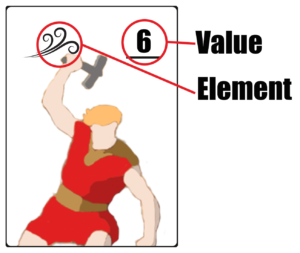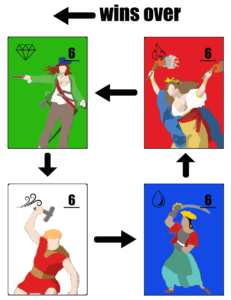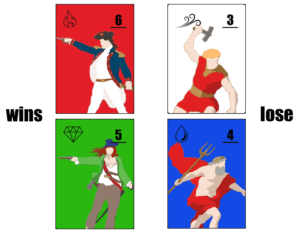What is the difference between a “working” and a “display” prototype? What is required of a working prototype, and what might cause one to fail?
A working prototype is intended to do just that, work. It is the version that will be used by playtesters and potential publishers. A display prototype has finished art and components and is intended for distributors and chain buyers. Generally the display prototypes are very beautiful and may posses unfinished rules but have graphics that attract interest.
Ways for your prototype to fail:
- Not supplying all the pieces so that the game is playable
- Not testing the game with the amount of players you say your game works for (3-5 is the sweet spot)
- Not updating the rule book after making changes to the game
- Adding components you haven’t playtested and then sending to a publisher
A working playtest must be playable, legible, and user friendly
What makes for a good prototype according to Dale Yu?
The first impression your game gives off is very important. Everything should be neatly organized and decently pretty. Having easy to understand, well written rules is also very important for your prototype. Having a full playable copy is
What advice from Richard Levy will help you pitch your game? Where might you pitch your game?
Before pitching a game it’s important to do your homework and research about different companies. Figure out if individuals have had good experiences with some companies. You should know your game history type, market, and the interests of companies you’d like to submit to.
Sell yourself well, and take rejection as “not now”. Some really amazing games have been rejected many times. Do not let rejection shake your confidence; however, you also need to control your ego.
Pitch ideas when companies are ready to listen, and have a pretty solid prototype. Make multiple submissions if you can, and limit the use of agents unless they have some pretty good success.
What do publishers look for in a game?
The fun factor, player interaction, immediacy of play, strategy, an interesting theme, an immersive experience, interrelated theme and rules, solid rules and mechanics, innovative rules, innovative components, easily manufactured components, compatibility with other products, the correct target market, a good title, expansion potential, multi-language capability, easy demoing, and collectability (sometimes).
So just a short list of things…
What makes a good set of Rules?
A good overview to grab buyers interest, a list of components, a well written set up, a definition of what gameplay looks like, different card types, a definition of the endgame and what winning looks like, examples of play/strategies/hints/optional rules/game variants, and last but not least credits.
Describe the best game you’ve made this semester in 250 words? Follow Michelle Nephew’s outline.
“I’m Cookin'” is a collaborative and competitive game where players collect ingredients in order to “cook” recipes. Ingredients are tiles that get pulled out of a “shopping bag” and recipes are cards with required ingredients and the point value indicated. Currently the game supports 3-5 players who each choose a character to play as that have certain attributes (for example “The Chef” gets a bonus point for every recipe with no substitutions). Players may trade ingredients or put their own spin on recipes by subbing in ingredients to complete a recipe. The aim is getting creative in order to cook enough meals to get a total of 15 points first. The ideal age range would be 10+ with the game taking an average of 60 minutes.





